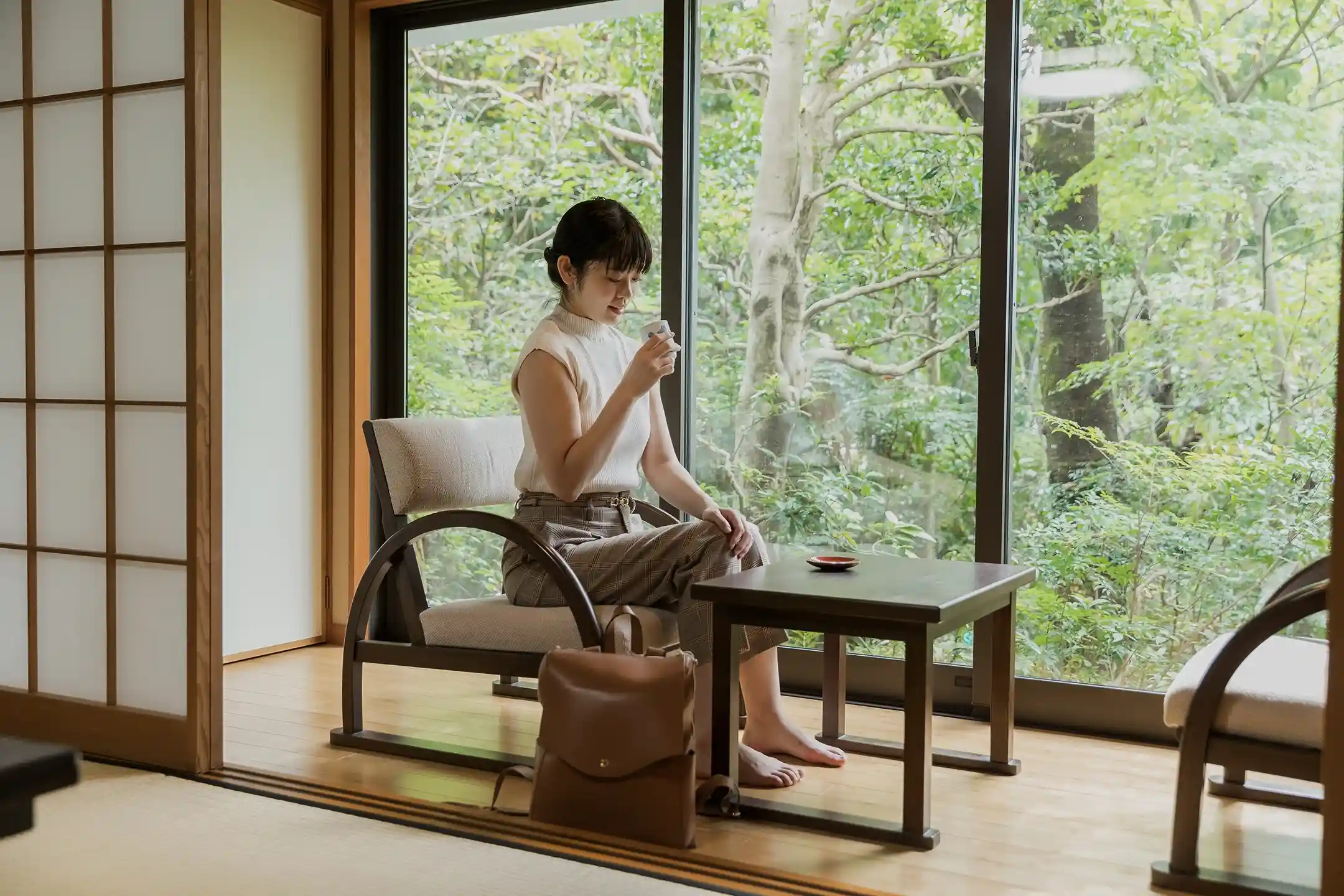Step away from the city’s noise and let your mind and body reset in Hakone, embraced by the rich landscapes of Fuji‑Hakone‑Izu National Park.
Following a three‑day model route on the Hakone Loop, you’ll weave together healing hot‑spring bathing and forest therapy with organic dining and mindful encounters with tradition—shaping a luxurious wellness experience. With an eco‑conscious stay, you’ll feel nourished to the core, body and spirit, as you make a special circuit around Hakone.
What Is the Hakone Loop (Hakone Circuit)? Access, Best Seasons, and Essential Basics
“Hakone Loop” (also called the Hakone Circuit) refers to an itinerary that takes you across the broader Hakone area to fully enjoy its hot springs and nature. Getting there from the Tokyo metropolitan area is easy: take the Odakyu Romancecar directly from Shinjuku Station (about 90 minutes), or ride the Shinkansen to Odawara Station, then transfer to the Hakone Tozan Railway for roughly 15 minutes to arrive at the gateway, Hakone‑Yumoto.
On the ground, you can link together rail, cable car, ropeway, and the pirate‑ship–style sightseeing boat to complete the classic hakone loop around Lake Ashi. If you use an unlimited‑ride free pass, you can move comfortably on eco‑friendly public transport without worrying about traffic.
Because Hakone sits at higher elevations, summers are cooler than at the foot of the mountains—the lakeside can be nearly 5°C (about 9°F) below central Tokyo—so it’s known as a summer retreat. In autumn, native forests of beech and maple turn brilliant shades, and the area becomes one of Japan’s most beloved foliage destinations—the busiest season of the year.
Winter brings clear, crisp air and more sunny days, giving you magnificent views of snow‑capped Mt. Fuji and the quintessential Hakone pleasure of open‑air hot springs under a cold, invigorating sky. Spring brings mountain cherry blossoms, Mitsuba azalea, and fresh greens; early summer is famous for hydrangeas along the mountain railway, nicknamed the “Hydrangea Train.”
You can enjoy distinct charms year‑round, but the weather can be changeable, so packing a light layer and rain gear will give you peace of mind.

Three Reasons the Hakone Loop Is Ideal for Wellness & Sustainability
Hakone has long been known as a hot‑spring retreat that brings healing to people, but in recent years it has come to be recognized as more than that. Today, it is celebrated as a destination where travelers can experience not only physical and mental well‑being, but also a sense of harmony with nature and the local community. Every landscape encountered along the journey, every cultural touchpoint, and every trace of daily life rooted in the region leaves a quiet yet profound impact on those who visit. Why, then, is Hakone such a special place where wellness and sustainability truly come together? The answer can be found in three key reasons.
Diverse Natural Environments Inside a National Park
The Hakone area sits within Fuji‑Hakone‑Izu National Park, where volcanic terrain nurtures rich ecosystems and abundant hot‑spring resources. Roughly 25,000 tons of hot‑spring water well up daily from the Hakone mountains, spanning about 20 types—from alkaline simple springs to sulfur springs—bringing varied benefits from easing neuralgia to enhancing skin health. Scenic diversity abounds: Lake Ashi at about 700 meters above sea level, the Owakudani crater, the Sengokuhara Marsh (a national natural monument), and the pampas‑grass fields on Mt. Taigatake.
When you breathe deeply by the lake or in the forest, air rich in phytoncides (aromatic compounds released by plants) fills your lungs; studies report associations with reduced stress hormones and enhanced immune function. In Hakone, encircled by forests and hot springs, you’ll find opportunities everywhere to rebalance through the power of nature.
![[Hakone Town, Kanagawa Prefecture] Spring on the Plateau](https://blog.bespoke-discovery.com/hs-fs/hubfs/BlogArticles/203A%20Sustainable%20Wellness%20Journey%20on%20the%20Hakone%20Loop/%5BHakone%20Town%2c%20Kanagawa%20Prefecture%5D%20Spring%20on%20the%20Plateau.webp?width=750&height=500&name=%5BHakone%20Town%2c%20Kanagawa%20Prefecture%5D%20Spring%20on%20the%20Plateau.webp)
Sustainable Tourism Advanced by the Entire Region
Hakone Town promotes destination sustainability through an “All‑Hakone” effort uniting government, businesses, and residents.
For example, at Hakone Yunohana Prince Hotel, a geothermal binary power system harnesses hot‑spring steam heat to supply about 20% of the property’s electricity, cutting roughly 187 tons of CO₂ annually. Elsewhere, you’ll find bottle‑refill stations for travelers, reductions in single‑use plastic amenities, and creative uses of locally thinned timber in architecture and souvenirs—each facility devising its own solutions.
Recognized for these initiatives, Hakone Town won first place globally in the Business & Marketing category of the “Top 100 Sustainable Destinations” in 2023.
Blending the hot‑spring culture’s “mottainai” (no‑waste) ethos with advanced technology, Hakone is building a tourism model that’s gentle on the environment and circulates benefits locally—key reasons wellness‑minded travelers choose it.
A Two‑Night, Three‑Day Model Route for the Hakone Wellness Loop
To fully enjoy the many charms of Hakone even within a limited schedule, it is essential to strike a balance between efficient travel and ample time for relaxation. Rather than rushing through sightseeing spots, the journey itself becomes a wellness experience when you take the time to immerse yourself in nature and culture while allowing both body and mind to unwind. With this in mind, we present a three‑day, two‑night model itinerary that harmoniously blends “seeing,” “dining,” and “healing.” The first day gently welcomes you into Hakone’s natural surroundings while easing the fatigue of travel; the second day offers opportunities to restore both body and spirit more deeply; and the final day closes with awe‑inspiring landscapes that leave a lingering impression. Compact though it may be, this journey will stay with you as a truly nourishing experience for both mind and body.
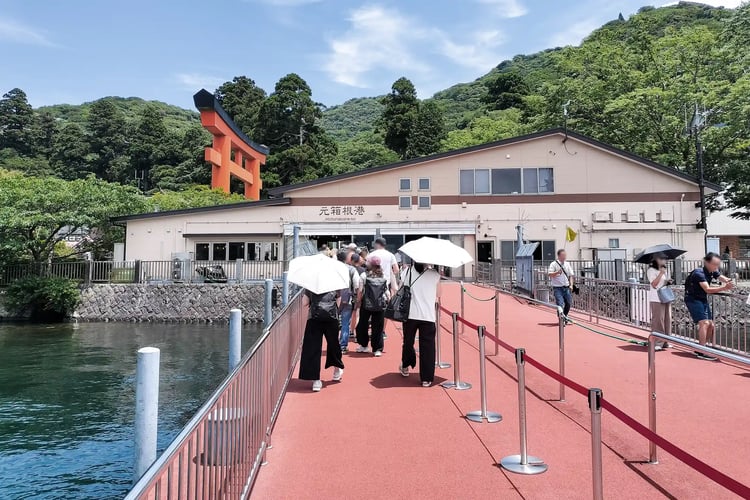
Day 1 A Welcome Retreat of Forest and Lake
Arrive at Hakone‑Yumoto Station from Shinjuku on the Romancecar, and your journey begins. Start with a stroll along the cedar‑lined Hakone Old Highway (Kyukaidō). Planted in the early Edo period, the towering cedars create a hushed, dim corridor even at midday; you’ll slip into forest bathing as if traveling back in time. Walking through clear air, attuned to both history and nature, you’ll feel your mind gently unwind.
For lunch, head to the vegan‑friendly Japanese restaurant “Shika Chaya” for a vibrant set meal brimming with local vegetables. Savor seasonal dishes and yuba, and recharge from within. In the afternoon, check into a hot‑spring ryokan by Lake Ashi.
Soak in your open‑air bath while gazing across the lake from your terrace. The alkaline, skin‑loving water gently lifts dullness to leave your skin silky smooth, easing any travel tension. Turn in early tonight and let the day’s fatigue melt away.
Day 2 A Day of Hot Springs, Zazen, and Art to Recenter You
On your second morning, join the early‑morning zazen session hosted by your inn. Sitting tall in a quiet main hall, you’ll slow your breath and clear your mind; the shōjin rice‑porridge breakfast that follows seems to sink into your body. After breakfast, take a dip at a sulfur‑spring hot bath to warm up and give your skin a dewy glow, then check out.
In the afternoon, visit the Pola Museum of Art nestled in the woods. With a low profile and much of the building placed underground, the architecture blends into the surrounding forest. As you admire works by Monet, Renoir, and others, dappled light through wide glass brings a soothing sense of nature indoors. After your art interlude, move to a hotel in the Gora area, warm yourself to the core in a private sauna, and then deepen your relaxation in an open‑air bath.
Dinner features vegan cheese made from cashews, rice‑flour pasta, and a thoughtful fusion of raw‑food and macrobiotic cuisine. You’ll be surprised by the satisfying depth of flavor despite the absence of animal products and gluten, and you’ll enjoy a body‑kind course that still feels indulgent.
Day 3 Close with Mt. Fuji Views and Therapeutic Soaking
Begin the final day with early‑morning yoga to charge your energy for what’s ahead; after breakfast, check out. Ride the Hakone Ropeway to Owakudani and take in panoramas of Mt. Fuji and the steam rising from the crater.
Then bus to the Sengokuhara Highlands to enjoy the season’s scenery—like the sweeping pampas‑grass fields in autumn. Finish back in Hakone‑Yumoto with a locavore lunch.
A fermentation‑forward set meal made with Mishima vegetables from Hakone’s western foothills and Ashigara miso offers gentle, wholesome flavors that soothe travel‑worn bodies. Carry your Hakone days in your heart as you return to Tokyo.
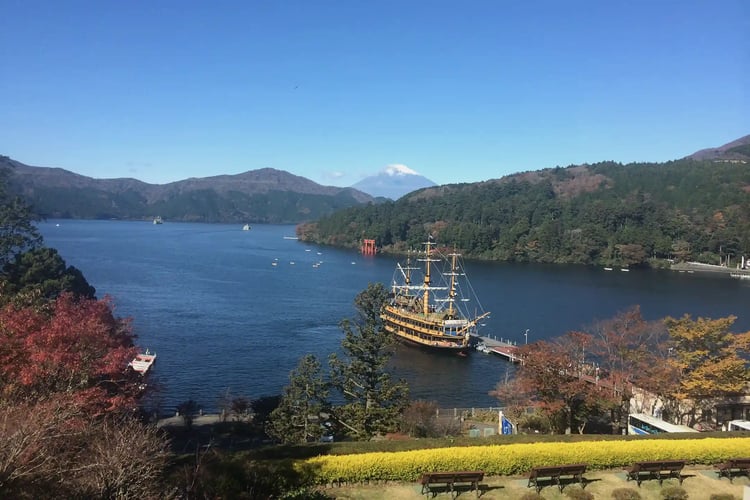
Experience the Hakone Loop Through Nature‑Symbiotic Activities
On a Hakone Loop, you’ll find a wealth of nature‑symbiotic activities that let you immerse yourself in the landscape. For travelers seeking a high‑value stay, the most meaningful moments often come from these sustainable, place‑rooted programs that go far beyond simple sightseeing.
From restorative forest walks and treks, to e‑mobility explorations of scenic viewpoints, to hands‑on crafts made with natural materials—you can recharge yourself in ways that are gentle on the planet.
Forest Bathing & Mindfulness Walks
Encircled by rich woodland, Hakone is gaining attention for therapeutic walking. A slow forest stroll that tunes you into the sensation of each step, the birdsong, and the wind—“walking meditation”—is reported to sharpen concentration and heighten the senses.
Pause for deep breaths and draw in the scent of trees (phytoncides) to balance your autonomic nervous system and bring calm. On the forest‑therapy trails developed by Hakone Town, you can even pair mindfulness with a specialist guide.
Quiet moments of sensory focus in the woods help dissolve stress and support immune resilience.
EV Cycling to Hidden Scenic Spots
Hakone’s terrain has plenty of ups and downs, but with an electric‑assist bicycle (E‑Bike), even steep grades feel easy. As an eco‑friendly mode of travel, rentals are becoming more available around town. Around Lake Ashi, some visitor facilities rent E‑Bikes for about ¥1,000 per day, letting you freely reach quiet shoreline viewpoints and marshlands where wild birds gather—hidden gems you might miss by car.
The near‑silent motor won’t intrude on the babble of streams or birdsong, so you can savor a feeling of oneness with nature even in motion. During breaks, take deep breaths on a lakeside bench and enjoy the hush and the breeze skimming the water. With charging stations dotted around, longer rides are worry‑free.
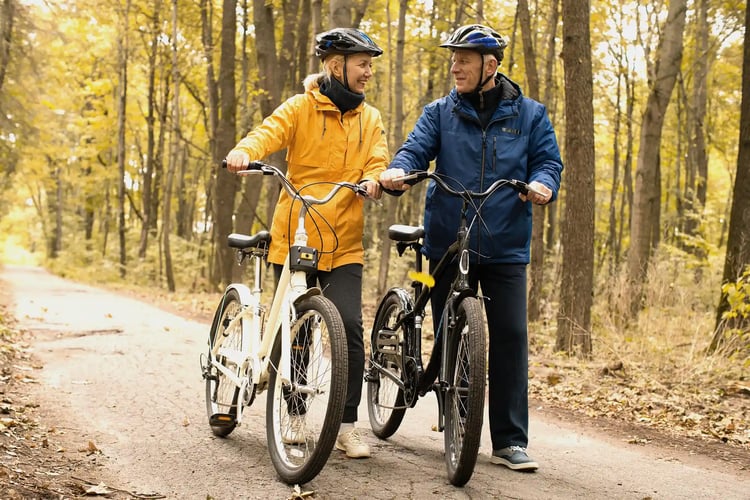
Craft Experiences with Natural Materials
To create a tangible memory, try a craft workshop using local natural materials. For instance, you might turn thinned timber from Hakone forests (wood removed for healthy forest management) into your own yoga block or coasters. The warmth of wood makes for ideal souvenirs—each use will take you back to Hakone’s woods and help you relax.
In studios of Hakone’s yosegi marquetry, some offer accessory‑making with offcuts. Or join a sachet workshop that pairs washi paper with herbs: drip one or two drops of essential oil onto chips of Japanese cypress (hinoki) to capture a fresh forest aroma.
The gentle textures and scents of these natural materials are soothing, and the hands‑on experience becomes a meaningful way to learn about the SDGs while traveling.
Savor the Hakone Loop with Organic & Locally Sourced Dining
Food experiences are essential to any wellness journey. On the Hakone Loop, you can enjoy organic, locally sourced dining that’s gentle on your body and mindful of sustainability. Dishes made from fresh local produce help you take in the energy of the land itself, elevating the fulfillment of your trip.
Here are three signature dining styles you can find in Hakone: fermentation‑forward lunches, dinners that blend raw‑food and macrobiotic approaches, and herb‑scented afternoon teas.
Each one honors the integrity of its ingredients while delivering quality worthy of a luxury getaway. These multi‑sensory meals will leave a lasting impression.
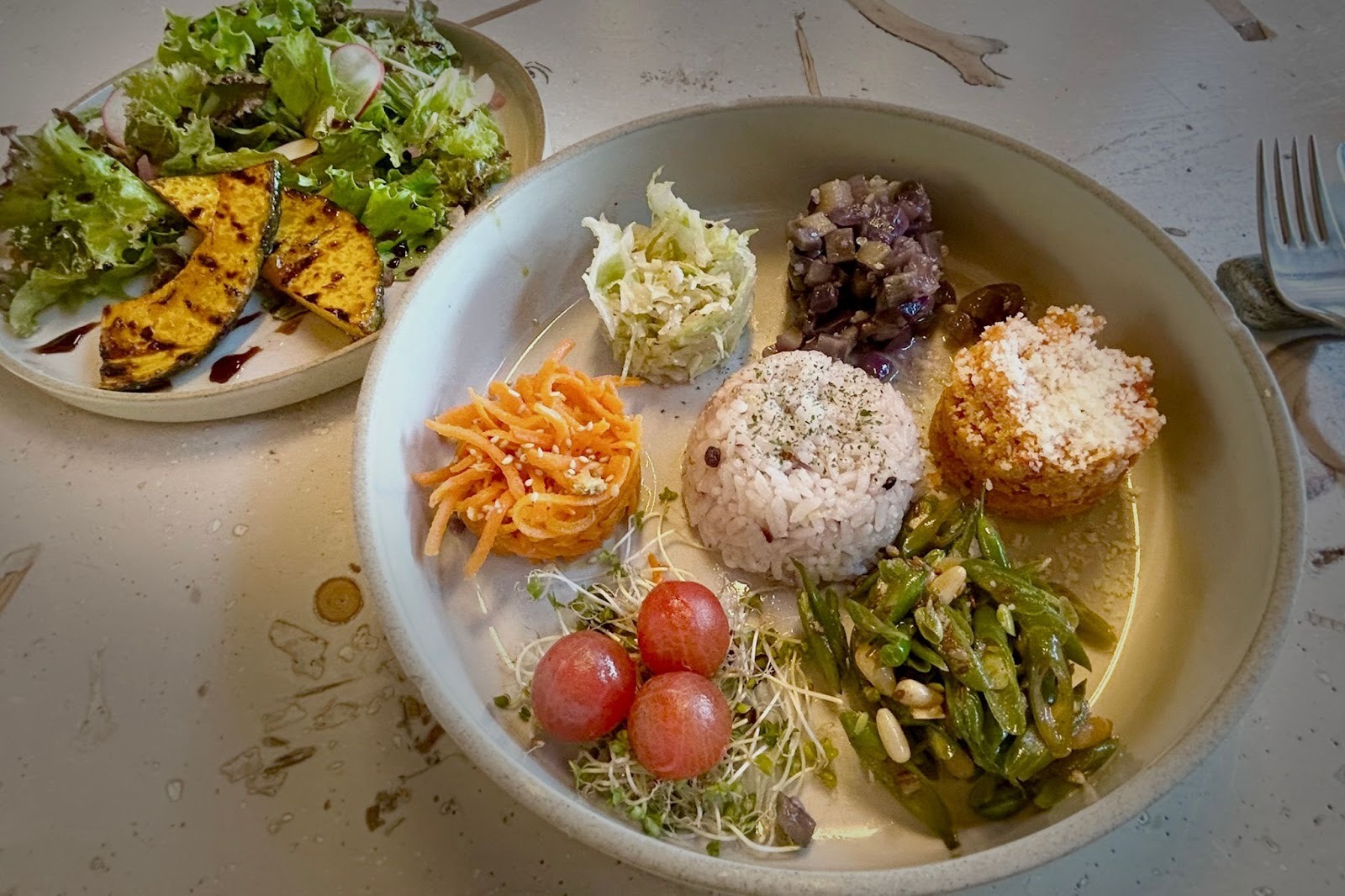
Fermentation Lunch Celebrating Seasonal Produce
Centered on organic vegetables and grains from the western foothills of Hakone, a lunch that makes creative use of fermented seasonings like miso and kōji is perfect for replenishing your energy. Picture a plate piled with farm‑fresh seasonal vegetables, a house dip made with Ashigara miso, and a soup combining soymilk with sake lees—dishes that showcase the umami of fermentation.
A smoothie sweetened not with sugar but with kōji‑based amazake supports gut health and serves beautifully as a dessert alternative. After a fermentation‑forward lunch that draws out the natural flavors of each ingredient, you’ll feel vitality welling up from within.
Raw‑Food & Macrobiotic Dinner
For dinner, consider a full course of raw‑food and macrobiotic cuisine that minimizes animal products and wheat. In Hakone, there are retreat facilities that fuse macrobiotics with French‑inspired techniques using seasonal organic ingredients.(*1)
From appetizers to mains, local organic vegetables play the starring role, with thoughtfully balanced grains, legumes, and seaweeds adding substance. Creamy cashew‑based “cheese,” gluten‑free brown‑rice bread, and refined‑sugar‑free raw desserts deliver high satisfaction while caring for beauty and health. A restorative, body‑kind dinner helps your travel fatigue lift lightly.
(*1 Reference: Vegewel “Bio Terrace Organica Hakone” retreat report https://vegewel.com/ja/style/organica)
Luxury Stays Selection──Where to Elevate Your Hakone Loop
Hakone offers an array of luxurious places to stay, blessed with nature and renowned hot springs. Here, we introduce two styles: a private onsen ryokan where you can immerse yourself in authentic hot‑spring bathing, and a design‑forward boutique hotel. Both deliver refined hospitality and restorative moments out of the everyday—perfectly elevating your Hakone Loop.
A Lakeside Private Onsen Ryokan
Set on the shores of Lake Ashi in Hakone Town, the hot‑spring ryokan “Hakone Ashinoko Hanaori” is a serene hideaway immersed in nature.(*1)
Facilities invite you to savor Hakone with all five senses: an expansive water‑feature terrace that feels continuous with Lake Ashi, and a seasonal open‑air garden bath. Guest‑room terraces with ceramic open‑air tubs let you bathe in luxury while wrapped in the forest and listening to birdsong and the wind—please note these terrace tubs are not hot‑spring water.
The hot springs themselves can be enjoyed in the large communal baths and private rental baths. Interiors in guest rooms are a calm, refined wash of whites and natural wood—understated Japanese modern design that radiates ease.(*2) The natural spring quality is a calcium‑magnesium‑sodium sulfate / hydrogen‑carbonate spring, associated with benefits such as recovery from fatigue and overall health support.
Research from Kyushu University also suggests that hot‑spring bathing may improve the gut environment and contribute to better health, making onsen time a refresh for body and mind. In this quiet lakeside haven, you can steep in excellent waters and heartfelt hospitality to your heart’s content.(*3)
Boutique Hotels in Hakone That Delight with Locally Sourced Dining
Opened in 2020, “Hotel Indigo Hakone Gora” is a boutique property designed around the concept of a “Neighborhood Story,” weaving Gora’s local culture into its aesthetics. Every guest room features a private tub fed by natural hot spring water from Miyagino Onsen, so you can enjoy exclusive bathing from check‑in to check‑out.(*4)
At the restaurant and bar, savor wood‑fired grilled dishes made with local beef, seasonal vegetables, and fresh fish from the Odawara market—paired with representative local sake and craft beers. The hot‑spring spa offers a “new‑sense onsen entertainment” experience: immerse yourself in ancient‑style bathing while panoramic screens evoke scenes of flame and water.
You’ll reset body and mind amid artful staging, and spend luxurious time in a polished space. With locally rooted cuisine and a gallery‑like atmosphere, this stay truly elevates your Hakone Loop.
(*1 Reference: Hakone Ryokan & Hotel Association “Hakone Ashinoko Hanaori” https://www.hakone-ryokan.or.jp/search/01381/)
(*2 Reference: Hakone Navi “Stayed at Hakone Ashinoko’s Hotel ‘Hanaori’!” https://www.hakonenavi.jp/feature/22210)
(*3 Reference: Kyushu University Research “Demonstrating the Effects of Hot‑Spring Bathing on the Gut Microbiota” https://www.kyushu-u.ac.jp/ja/researches/view/1037/)
(*4 Reference: Hakone Town Tourism Association “Hotel Indigo Hakone Gora” https://www.hakone.or.jp/6499)
Well‑Being Habits That Continue After Your Trip
The wellness and sustainability insights you experience on the Hakone Loop are well worth bringing home. With a few small adjustments, you can carry the calm and clarity from your journey into daily life.
Here are three easy‑to‑practice habits for busy days: a breathing meditation inspired by Hakone’s forests, a bathing method that takes cues from hot‑spring minerals, and interiors that capture nature’s essence.
Because each is tied to your travel memories, you’ll find them easier to keep—and they’ll nudge your quality of life upward. Even after the trip ends, your wellness time continues—bring home new habits from Hakone and enjoy richer days.
A 5‑Minute Breathing Meditation Guide
Even in a busy schedule, breathing meditation helps you relax as if you were back among the trees. Picture Hakone’s woods, sit comfortably in a quiet spot, and begin: inhale through your nose for a slow count of four, hold for seven, and exhale gently through your mouth for eight. Repeat this “4‑7‑8” pattern three or four times to activate your parasympathetic nervous system and steady your heart rate.
This practice can help ease anxiety and sleeplessness; build it into your bedtime routine for travel‑worthy deep rest. Keep your attention in the “here and now,” stay with the breath even for five minutes a day, and you’ll preserve the inner stability you cultivated on the Hakone Loop.
How to Use Bath Salts to Recreate Hot‑Spring Minerals
To invite a touch of Hakone’s hot‑spring comfort into your home bath, try making bath salts with baking soda and Epsom salt (magnesium sulfate). Epsom salt is a colorless, fragrance‑free crystal found among hot‑spring minerals; it’s known for warming you to the core.
Stir half a cup of baking soda (sodium bicarbonate) and half a cup of Epsom salt into your tub to create an alkaline, skin‑softening bath. Add one or two drops of essential oil—say lavender—for a forest‑like aroma.
If you’d like to approximate a sulfur note, consider pairing with a commercially made bathing powder that includes hot‑spring ingredients. On the weekend, sink into a slow home “onsen” and recall the warmth and relaxation from your trip.
Bringing Nature’s Essence into Your Interiors
Let the nature you encountered on the road live on at home—create a “little Hakone” in your everyday space. For example, place essential oils on a wooden diffuser crafted with Hakone’s yosegi marquetry; natural materials gently spread scent and set a serene, Japanese‑inflected mood.
Some luxury inns use Komatsu stone in minimalist stone diffusers, soaking them with forest‑inspired original blends to fill rooms with the grounded aroma of wood and earth.
You might also display a dried arrangement of Sengokuhara pampas grass or craft a miniature garden with lava stones from Mt. Fuji—items that call your travel memories back to the senses. Surrounded by interiors that evoke Hakone, you’ll keep a wellness mindset long after you return.
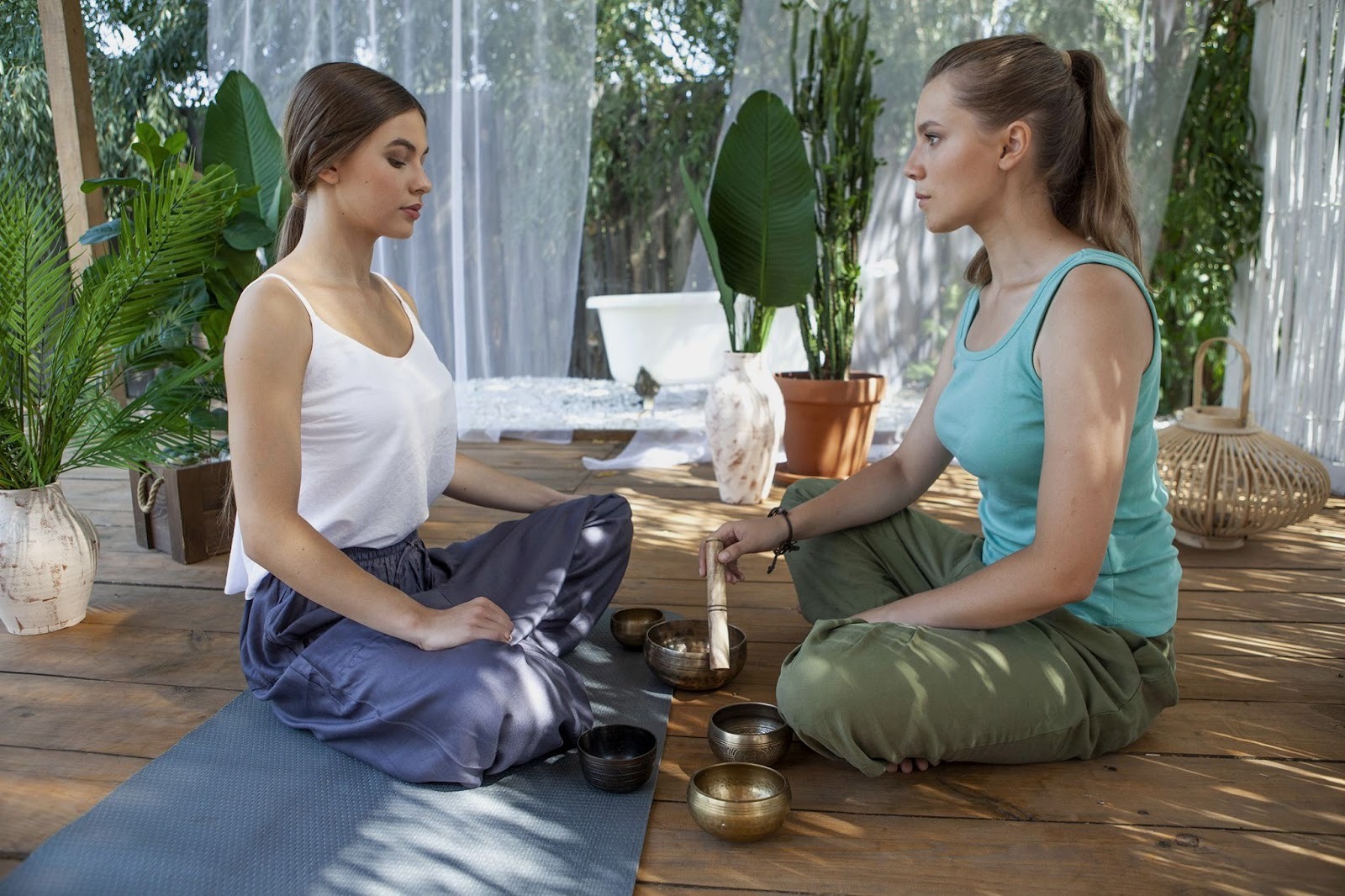
(*1 Reference: Kanto Health Insurance Association “Kenpo Dayori Web” article on stress‑relief methods https://www.kanto-kenpo.or.jp/webmagazine/2023/08/10/stress/index.html)
(*2 Reference: FELICE (Aroma Information Site) “How to Make Simple Aroma Bath Salts” https://www.fromcocoro.com/kaori/article/18425)
(*3 Reference: Joshi‑Riki “How to Make a Carbonated Bath” https://tantaka.co.jp/joshi-riki/archives/19913)
(*4 Reference: NIKKEI MAGAZINE article on “Fufu Hakone” https://magazine.nikkei.com/article/DGXZQOFK01DVC0R00C23A3000000)
Conclusion
The wellness and sustainability lessons you gather on the Hakone Loop show how a journey’s end can become a fresh beginning. Three days of deep breathing in grand nature, restorative hot‑spring time, and tastes of local bounty won’t just restore your balance—they’ll spark positive shifts in the life that follows. For your next vacation, come to Hakone and use this guide to shape your own sustainable wellness journey.
Author Bio

Maoko Shibuya
Content Planner & Writer Holding a master’s in Digital Marketing and experience across global markets, Maoko blends international perspective with a deep appreciation for Japan’s cultural heritage. She plans and writes compelling narratives that reveal the country’s beauty and depth, drawing on her passion for travel, local cuisine, and cultural exploration.


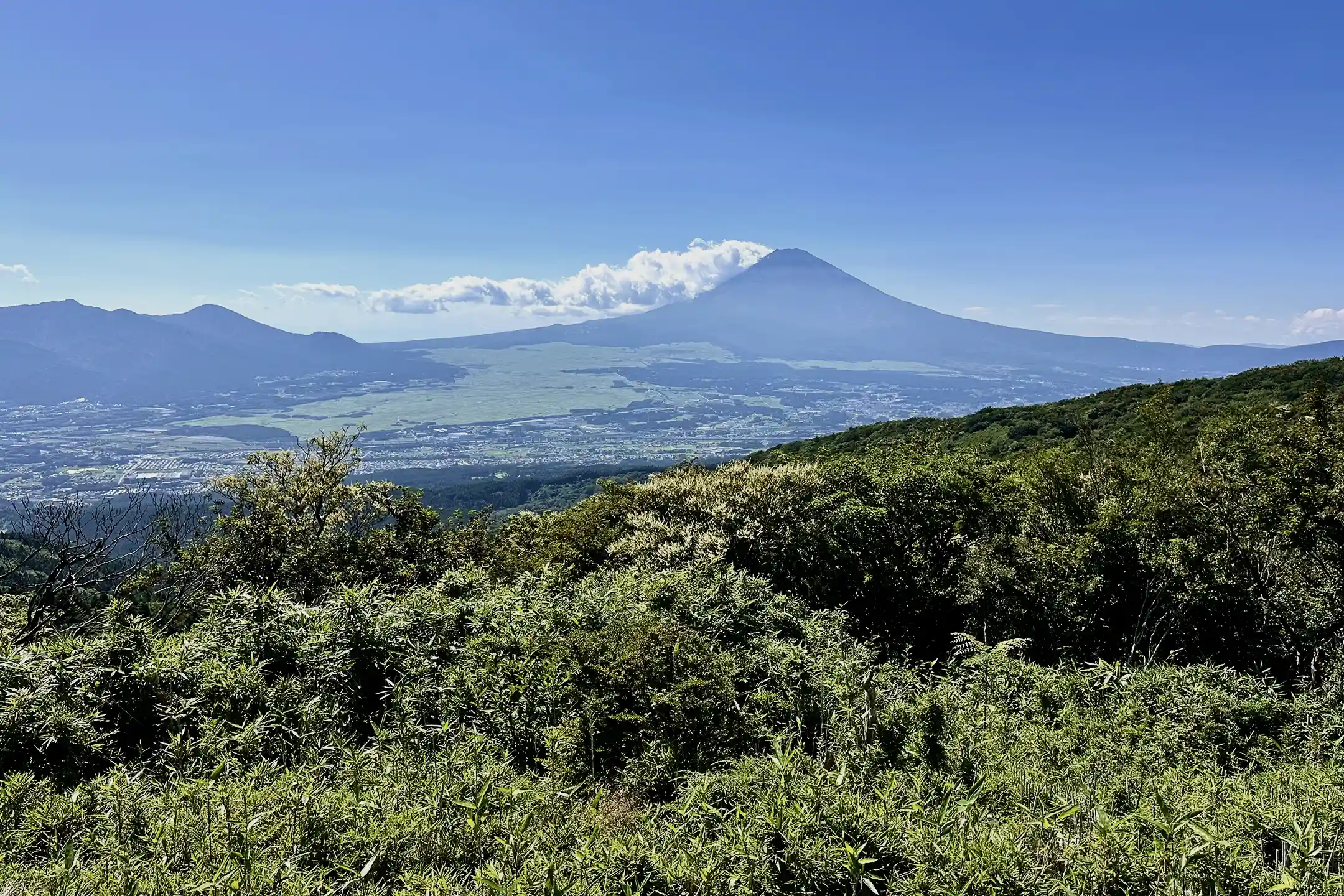
.webp)

